Guide
The BFCM Retention Guide
The BFCM Retention Guide
Break the Cycle of Discount Dependency
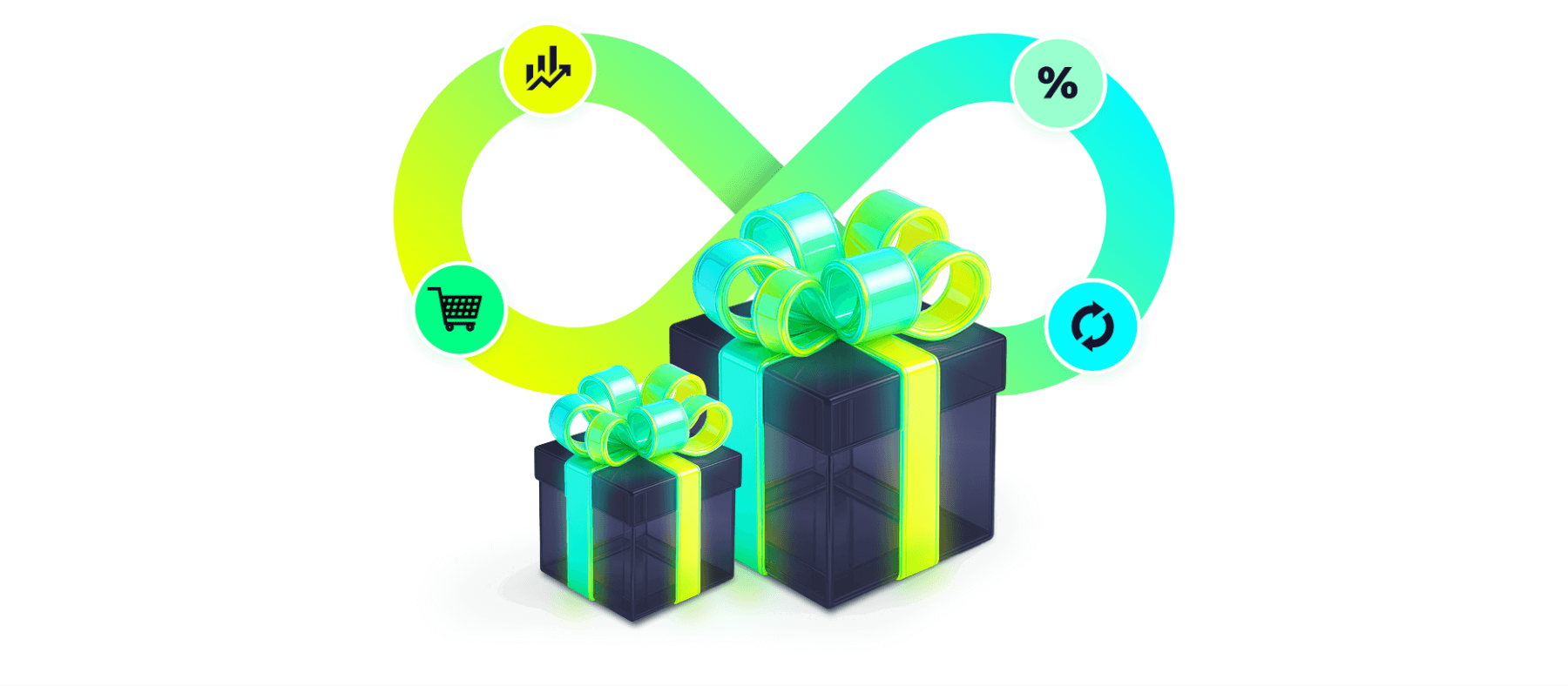
The holiday season defines which brands surge ahead and which fall behind. In 2024, shoppers spent $41.1 billion during Cyber Week alone, up 8.2% from the year before, and $240.8 billion across the full holiday period.
However, more spending does not necessarily guarantee higher profits. In the race to compete, many brands resort to aggressive discounts that drive short-term volume but erode profitability.
On paper, the BFCM sales spike looks like a win. But the real story is more complex. 64% of brands say holiday shoppers retain worse and spend less than regular customers. And with customer acquisition costs (CAC) up nearly 40% since 2023, every lost dollar hurts more.
That’s why leading brands are rethinking what a “successful” BFCM really looks like and using more strategic incentive structures to grow profitably.
At Ordergroove, we power subscriptions and memberships for many of the world’s leading brands, and today 11% of adult Americans have an active subscription powered by our platform. That gives us a unique view into which BFCM strategies actually convert and retain.
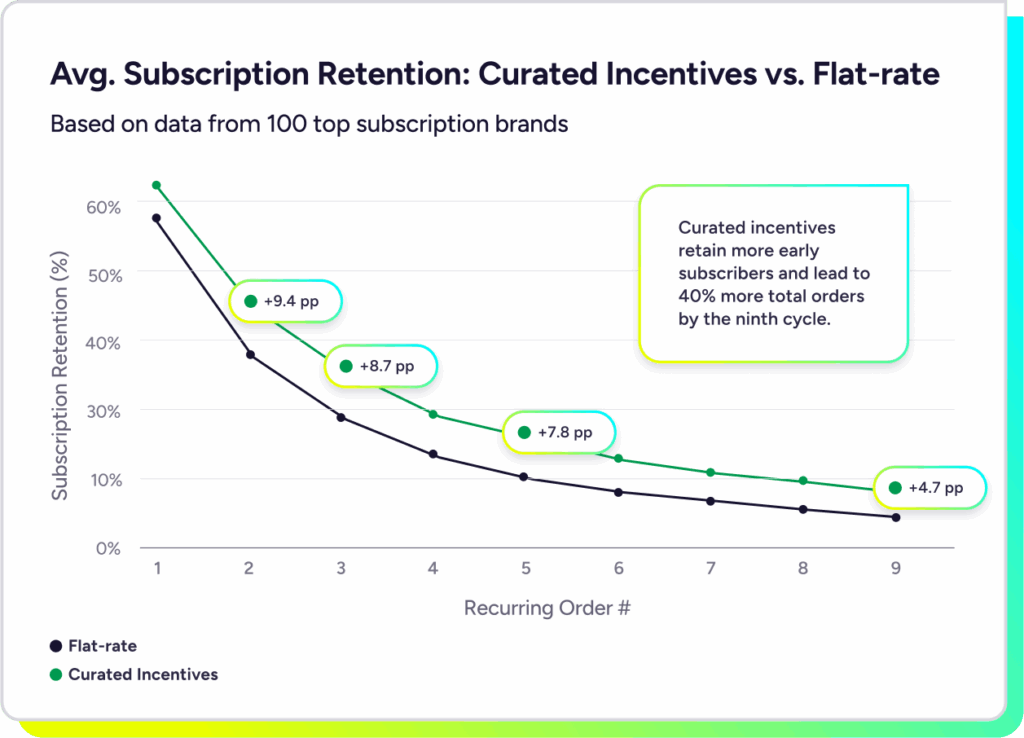
In a recent Ordergroove analysis of 100 top subscription businesses, brands using curated incentives that are stackable and hyper-personalized saw 40% more repeat orders from holiday shoppers compared to those using flat-rate discounts.
This kind of sustained engagement leads to stronger retention, healthier unit economics, and higher lifetime value (LTV), all of which are critical to turning BFCM from a short-term bump into long-term growth.
The most profitable brands are charting a different course. They use BFCM as a launchpad for recurring revenue by reserving their steepest discounts for subscribers and reinforcing those offers with retention incentives that keep customers engaged well beyond the holiday season.
From one-time holiday shoppers to loyal subscribers

Holiday shoppers are often written off as bargain hunters who are likely to churn. But in reality, most are simply motivated by value, and with the right approach, can become high-LTV subscribers.
The problem isn’t the shoppers themselves but the way brands treat them. Flat rate or one-size-fits-all discounts like “25% off everything” only erode margins when acquisition costs are already high and condition customers to wait for the next big sale. This cycle of discount dependency is what creates low retention.
And as Nirav Sheth, CEO of Anatta, a DTC eCommerce agency and Shopify Platinum Partner, warns, without a retention strategy, the BFCM spike could be short-lived:
“BFCM is the biggest yearly opportunity for customer acquisition. But if you don’t have a strong basis for retention, you’re ignoring the chance to turn a one-time shopper into a larger base of customers who will buy from you throughout the year; all at the expense of your margins.”
In a recent Ordergroove analysis, offering curated incentives resulted in a 32% improvement in retention after the second order compared to flat rate discounts, proving that the way you structure incentives has a greater impact on retention than the shopper’s initial intent or purchase behavior.
By reserving their strongest offers for subscribers and driving ongoing value with retention incentives, brands can turn holiday sales from a short-lived bump into the start of a recurring revenue engine that compounds in value over time.
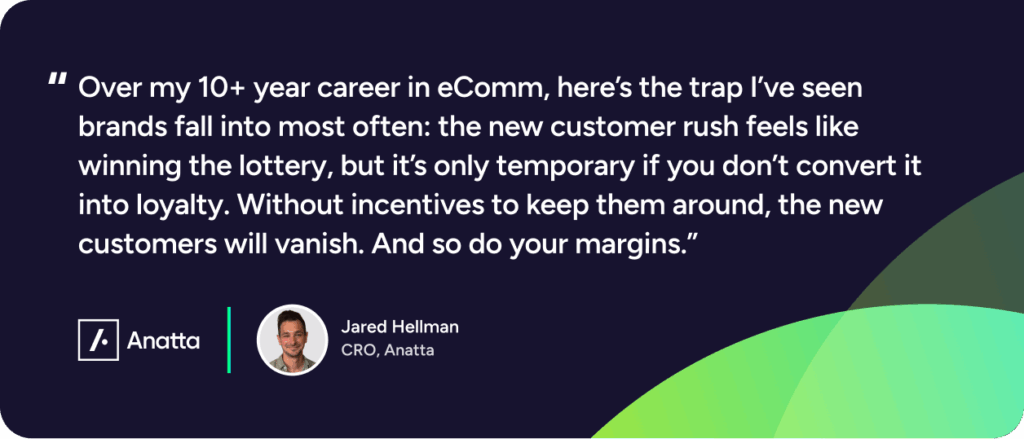
Why subscriptions should be your BFCM strategy this year
For many eCommerce leaders, the biggest hesitation around subscription incentives is profitability. At first glance, offering a large upfront discount on a subscription can seem riskier than applying a modest discount to a one-time checkout.
One of the biggest questions that comes up is “What if customers lock in a large discount for the life of their subscription? Won’t that erode margin over time?”
But the reality is that subscription unit economics give brands the financial efficiency they need to make bold moves and win big.
It’s exactly how leading DTC vitamin and supplement brand, OLLY, approaches the holidays. Jennifer Peters, OLLY’s Director of DTC, Martech, and Digital Compliance, says:
“During BFCM and the holidays, we lead with a subscription-first approach; making subscriptions the smartest deal on the table. They’re highlighted on PDPs, easy to add in-cart, and supported with eye-catching incentives.
Because subscriptions are built for retention, emphasizing them during peak season keeps holiday shoppers engaged into the new year and strengthens LTV.”

Let’s run the numbers: A hypothetical brand’s baseline unit economics
Imagine a brand sells a product for $90. With a gross margin of 69%, each order generates about $62 in gross profit before marketing costs.
Now, assume that during BFCM, this brand spends $50 to acquire each new customer, which leaves just $12 in net profit per order after CAC.
With those numbers in mind, let’s compare two different discount strategies: a smaller 25% discount for one-time buyers versus a larger 40% discount for subscription purchases.

The hidden cost of a 25% off sitewide discount
Last year, this brand offered a 25% discount for one-time buyers during BFCM. But those customers were largely discount-driven and didn’t return after the holidays, with only 1 in 5 purchasing again on average.
That means their typical BFCM customer completed just 1.2 lifetime orders, translating to $52 in lifetime gross profit. But once their $50 in CAC was factored in, the brand was left with only $2 in profit per customer.
In other words, the 25% discount barely broke even, leaving little to no buffer for an increase in CAC, which is something we often see during the BFCM season due to competition. And because the promotion centered around one-time sales, there was no retention strategy to increase LTV to offset costs and drive profitable growth.
Why a subscription discount drives more profit, not less
In preparing for this year’s peak season, that same brand reviewed their subscriber data and found something striking: subscribers consistently spend 3–4x more than one-time customers.
To stay conservative, they assumed that BFCM-acquired subscribers would only spend 2x more than one-time purchasers.
That assumption changed everything. With a 2x higher LTV, they could afford to offer up to 47% off subscriptions, nearly double what was viable for one-time customers.
They chose to test 40% off subscriptions, and here’s what the modeling showed:

Offering a discount on subscriptions delivered 26% more profit, 57% more revenue and $15 in profit per customer. A 7.5x improvement over the one-time discount.
Why curated incentives beat one-size-fits-all promotions

A curated incentive is a promotion you can tailor by customer type, product, or stage in the subscriber journey with the ability to stack multiple offers. For example, a shopper might get 40% off their first subscription order, then unlock free shipping on the second, and receive a gift on the third.
Compare that to a flat rate or your standard sitewide promotion discounts, like a “25% off everything” promotion, which treats every customer the same and creates diminishing returns. The outcome: higher costs, lower margins, and no lasting customer value.
Curated incentives, by contrast, continue working after the initial conversion to build compounding value over time. In a study of 100 top subscription brands, Ordergroove found that curated incentives drove 40% more repeat orders across the first nine subscription cycles than flat-rate discounts, and by the ninth order, retention was more than twice as high.
By retaining more subscribers early on, curated incentives drive stronger long-term retention and higher overall LTV.
These dynamic promotions allow brands to segment subscribers to create personalized offers, stack multiple rewards to reinforce loyalty, and drive repeat orders that extend LTV.
This shift from short-term volume to compounding, long-term value is what sets curated incentives apart.
Here are the four strategic levers that make curated incentives especially powerful:
Greater impact for holiday shoppers
By tailoring incentives to enrollment, retention, and AOV, brands can meet deal-driven holiday shoppers with offers that deliver stronger upfront value, like deeper savings or exclusive perks, while also improving subscriber retention and CLTV.
For example, a brand could offer 40% off the first subscription order to capture holiday shoppers, then follow with a free gift on their second order and a tiered discount that grows over time. This means shoppers feel like they’re unlocking ongoing value, and brands see higher retention and CLTV in return.
Product-level control
Unlike sitewide discounts, curated incentives let you offer higher discounts on high-margin or fast-selling products to drive initial subscription orders, while keeping tighter control on products with thinner margins.
Since incentives can be customized by product and audience, brands have the power to run A/B tests to compare different incentive structures and focus on what offers convert the best. With this type of control and agility, you can optimize for both growth and margin without using blanket discounts that erode long-term value.
Personalization by segment
With subscriber segmentation, brands can design unique incentive structures based on customer data. That might mean win-back offers for paused subscribers, milestone rewards for active customers, or larger upfront discounts for new cohorts most likely to convert.
This strategy can also extend to existing subscribers who want to feel valued during promotions. Instead of excluding them, brands can use curated incentives to automatically apply discounts to upcoming orders, include free gifts or other personalized offers on additional items to drive AOV and reduce churn.
Future-proof against price changes
Prices are always changing, whether it’s from inflation, tariffs or anything else. But curated incentives allow you to adjust discounts for new subscribers without changing existing ones, while also letting brands roll out updates to both new and current subscribers if they choose.
Instead of being stuck with locked-in discounts, brands can manage incentives dynamically so new subscribers get new terms and existing subscribers can phase in with notice and a grace window. This means fewer headaches around locked-in pricing on your side and forced cancellations for your subscribers.
The result is the opposite of one-size-fits-all: controlled spend on the right products, personalized offers for the right segments, and subscription LTV that keeps rising after BFCM.

This illustrative model shows how layering curated incentives throughout the subscriber journey could shorten CAC payback and compound LTV growth.
How curated incentives work across the subscriber lifecycle
There are three core types of curated incentives brands can deploy:
Enrollment drivers like first-order discounts, free shipping, or bonus gifts that encourage shoppers to sign up.
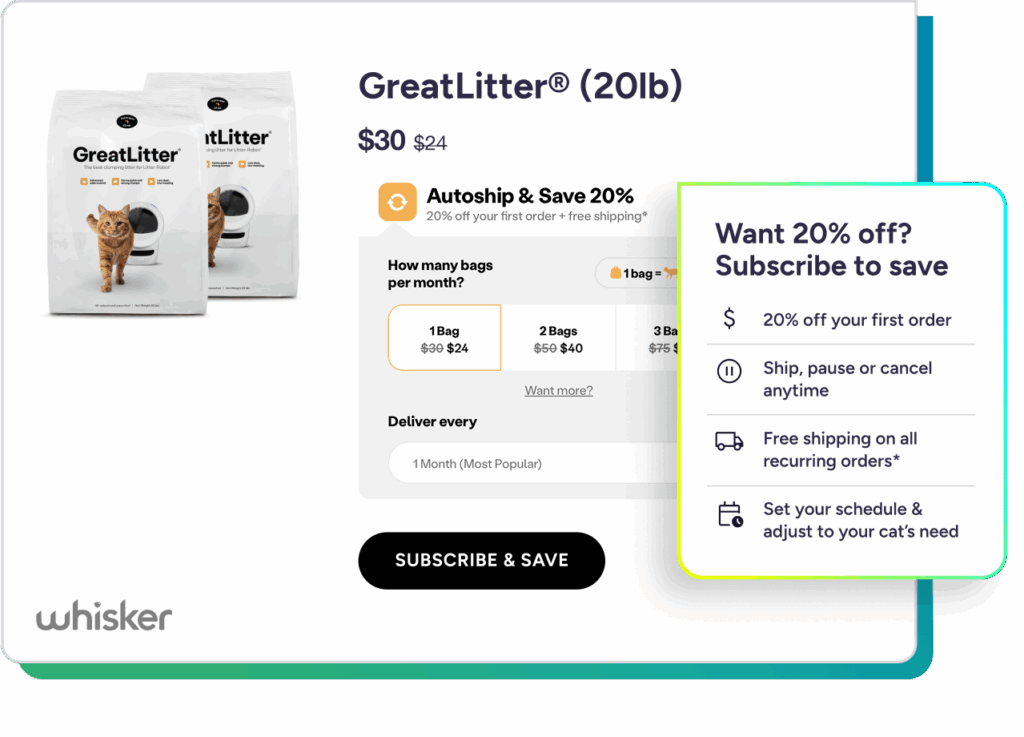
Retention drivers like subscriber-only perks or Nth-order rewards keep them engaged beyond the initial deal.
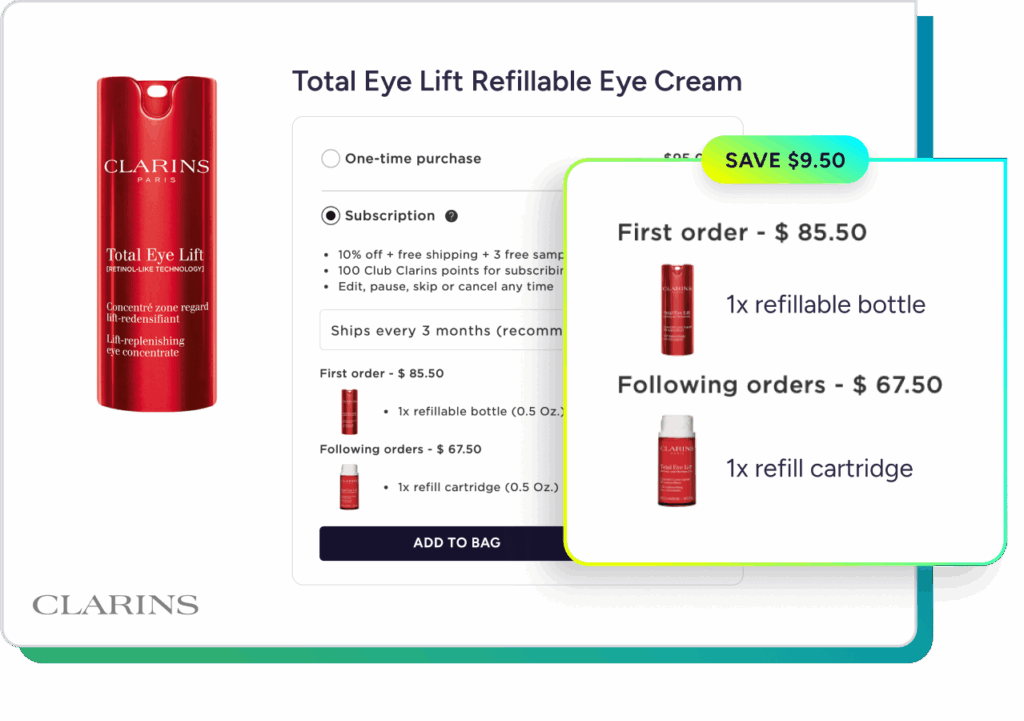
Average Order Value (AOV) drivers including Subscribe More, Save More offers, subscription bundles, or prepaid options motivate larger, more profitable commitments.

Together, these incentives give brands a playbook for competing aggressively during BFCM without sacrificing margins or subscriber loyalty.
How leading brands extend subscriber value beyond the holidays with curated incentives
Winning a holiday subscriber is only the beginning. The real opportunity comes after BFCM has passed, when brands can transform seasonal deal seekers into loyal, high-value customers.
As Edward Gaug, Director of Marketing & Partnerships at OneMagnify, a leading agency that specializes in data-driven marketing and digital transformation, puts it:
“Black Friday and Cyber Monday don’t just test your infrastructure, they reveal whether your brand’s digital experience was built for transactions or relationships. The brands that win retention don’t just survive the four-day traffic spike; they use it to prove they’re worth coming back to.”
The best way to illustrate this potential is to look at how leading brands have already put it into practice using Ordergroove’s Flex Incentives.
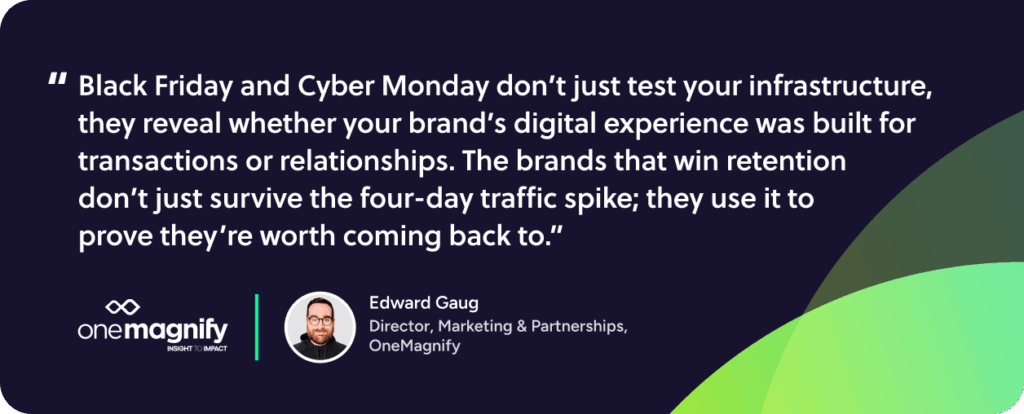
e.l.f. Cosmetics uses tiered incentives to reward long-term subscribers
e.l.f. Cosmetics leaned on curated incentives to transform short-term subscribers into long-term value. They introduced a subscription offer where the discount increased with each recurring order, starting at 15% for the first order, rising to 20% for the second, and 25% for the third. This tiered incentive structure gave customers a reason to keep their plan active and add more items to their cart each order cycle, driving 62% YoY recurring revenue growth
The approach improved retention, as subscribers were motivated to stay subscribed to unlock bigger savings, and the brand gained recurring revenue that extended far beyond the initial promotion.
Takeaway: For holiday-acquired subscribers, tiered incentives are a strategic way to turn a one-time deal into lasting growth. Instead of stopping at enrollment, they stack value over time and directly support the path to higher LTV.
ByHeart uses Subscribe More, Save More to drive holiday growth and streamline operations
In the run-up to the holidays, infant nutrition brand ByHeart introduced a Subscribe More, Save More curated incentive that rewarded families for adding extra products to their recurring orders. The promotion went live during BFCM and extended into January, driving a surge in subscriber engagement when shoppers were most eager for deals.
The incentive drove 24% growth in customer lifetime value in just three months, and simplified fulfillment by consolidating more items into fewer shipments, reducing operational overhead during a high-volume season.
Takeaway: This shows how curated incentives can do more than capture holiday traffic. ByHeart’s Subscribe More, Save More strategy gave seasonal shoppers a reason to stay while creating efficiencies for their business. These short-term promotions translated into higher LTV, stronger subscriber retention and smoother operations.
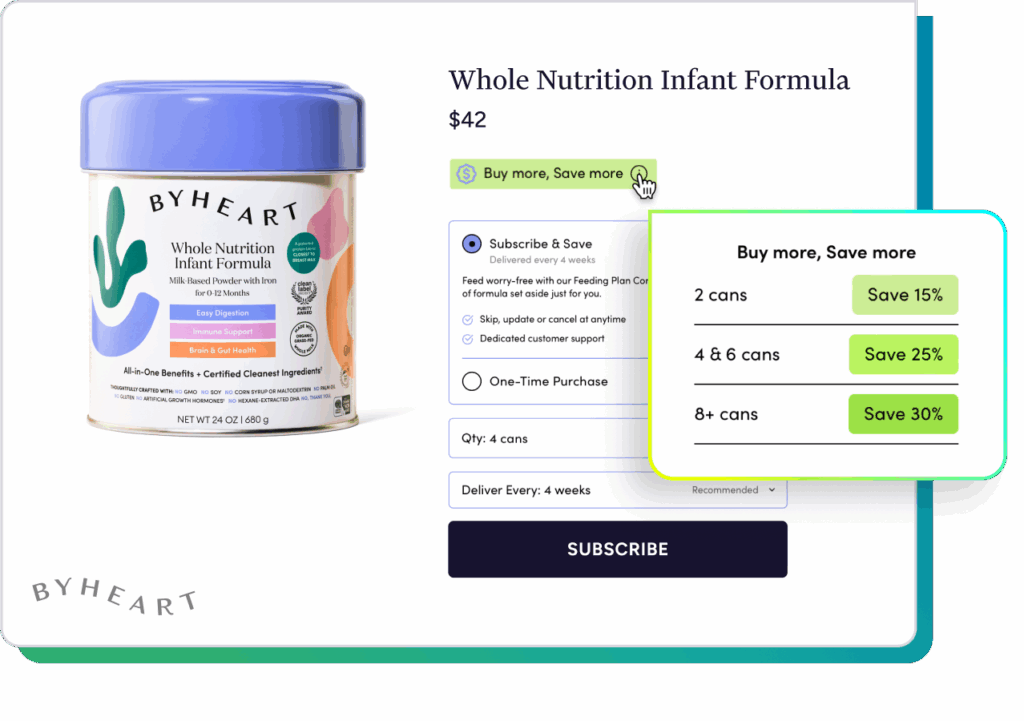
Keeping holiday subscribers engaged with retention rewards
Curated incentives can work beyond the first order to sustain loyalty over time. One proven way to do this is to craft milestone-based retention rewards tailored to specific subscriber cohorts that get unlocked after their third, fifth or even tenth order.
Instead of offering the same discount indefinitely, leading brands build excitement by giving subscribers a special gift or exclusive perk that keeps customers engaged beyond the initial holiday offer.
Takeaway: By rewarding loyalty and celebrating milestones, brands turn seasonal subscribers into high-LTV, long-term revenue drivers.
Turn BFCM momentum into year-round revenue with curated incentives
Black Friday and Cyber Monday often set the trajectory for the entire calendar year. Too often, the default strategy is to discount heavily, sacrifice margin, and hope that short-term gains outweigh long-term costs.
By making subscriptions and curated incentives the cornerstone of your holiday growth strategy, you can compete aggressively without putting profitability at risk. Curated incentives are how leading brands acquire customers at scale during BFCM, retain them beyond the holidays, and improve their lifetime value.
The math is clear and the strategy is proven. Now is the time to move beyond one-time discounts and turn BFCM into momentum for the year ahead.
Ordergroove’s Flex Incentives makes this shift simple, giving you the flexible infrastructure to design, launch, and scale profitable, curated incentive strategies that drive recurring revenue long after the holidays are over. Get in touch today.
A 5-step framework for your most profitable BFCM yet

Knowing the strategy is one thing. Putting it into practice is another.
To help make curated incentives a reality in your BFCM plan, here is a five-step framework you can adapt to your business to ensure your promotions not only win the holiday shopping surge but also set the stage for long-term recurring revenue growth.
1. Model your unit economics
- Calculate breakeven points for one-time purchases and subscription offers.
- Factor in product price, gross margin, and CAC to understand discount headroom.
- Use conservative assumptions to protect profitability.
2. Segment your subscriber cohorts
- Identify holiday-acquired subscribers, who are often deal-driven and less likely to repurchase.
- Group subscribers by the specific BFCM offer they redeemed.
- Differentiate high vs. low spenders to tailor retention incentives.
- Target active subscribers with upgrade offers or exclusive perks.
- Reach inactive or canceled subscribers with win-back or reactivation offers.
3. Choose which retention incentives to layer in
- Determine which products in your catalog should be eligible for these discounts
- Decide which retention layers to use: gifts, tiered rewards, free shipping
- Map these discounts and incentives to parts of your subscription journey: which is for the initial signup, recurring, or after certain thresholds.
4. Promoting your subscription offer
- Maximize subscription enrollment on Product Detail Pages by following best practices (default to subscription, highlight your discount, set a recommended frequency)
- Create a subscription landing page with all the perks and FAQs to point people towards when they have questions
- Have subscriptions be the star of your website with callout boxes and top-nav callouts
- Utilize in-cart and checkout experiences to give buyers the chance to convert their one-time purchase into a subscription
- Plan emails, text, and social campaigns to sign up for subscriptions and retarget previous subscribers and one-time buyers
5. Plan beyond BFCM
- Extend incentives into the new year to keep momentum.
- Run subscriber appreciation offers and seasonal campaigns, such as:
- A December campaign encouraging subscription gifting.
- A January subscriber appreciation discount.
- A surprise gift for February orders.
- A March “spring cleaning” incentive on subscription bundles.
- Test and optimize based on which incentives drove retention, AOV, and engagement.
- Feed these insights into next quarter’s plan and the next BFCM cycle.